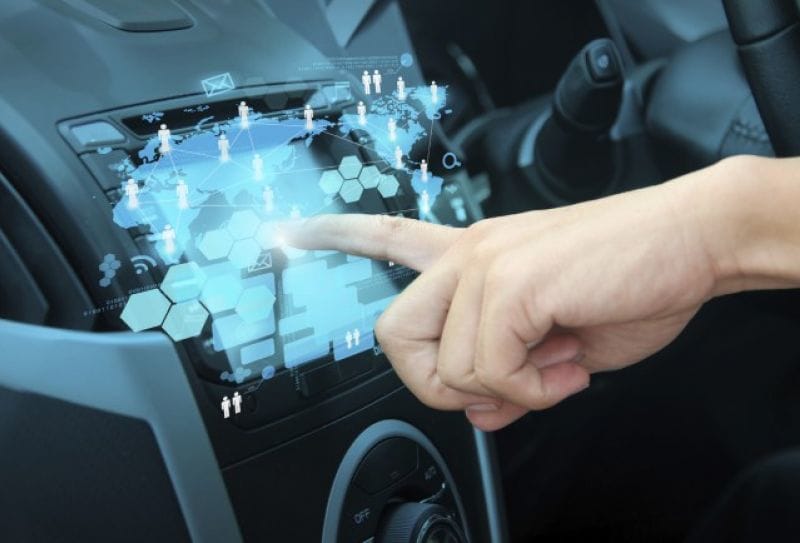Introduction
Office 365 has gained a lot of ground over the past year, but it is about to travel even further – literally.
At CES 2016 in Las Vegas, news recently broke that Microsoft would be teaming with Harman to bring productivity applications such as Office 365 to in-car technology systems. This means people will be able to work whilst in their car, and improve their productivity whilst on their commute.
In this article we discuss the rise of the mobile workforce and the use of technology in cars, and whether this combination is a good or bad thing. Should the car be a place of relaxation and a refuge from work, or can it be used to be more productive, free-up time elsewhere, and ultimately assist in having a successful career?
Flexible Working
Work place culture has been changing in recent times, and there is a shift from working the traditional ‘9 to 5’ to being able to work flexibly from home or other locations.
In June 2014 the government introduced legislation which gave employees the right to request flexible working hours, with employers having to reasonably consider these requests. There is clearly a demand for flexible working, as an estimated 14 million people in Britain want flexibility in their hours.
Although there are cultural barriers in some companies that prevent flexible working patterns (namely a lack of trust and the need to be ‘seen’ in the office), many employees also cite the lack of available technology to enable this shift in working patterns. This may be due to the lack of awareness of suitable solutions that facilitate remote working. Office 365 is one such solution that allows employees to carry out their tasks remotely, and is cost-effective for many employers to implement compared to more costly on-premise IT systems. Also, some Enterprise Mobility Suite (EMS) features are built into Office 365 allowing the control of multiple devices from one location, addressing the trend in Bring Your Own Device (BYOD).
Productivity whilst commuting
Trying to be as productive as possible in the free time people have whilst travelling isn’t exactly a new phenomenon. There are various suggestions on how to use this spare time effectively, whether that’s for personal productivity or work related productivity. Of course if you use public transport for your commute then you are able to get more done that if you drive. Many people take their laptops to get a head start on work, and organising your calendar and to-do lists is even possible on mobiles. At present, you are limited in terms of what you can do whilst driving (obviously the primary objective is to stay safe whilst driving), but even so you could listen to an audiobook or podcast, or even learn a language using an audio-based mobile app. In terms of work based productivity, you could schedule conference calls or catch up on your voicemails using a Bluetooth headset or the car’s speakers.
Technology in Cars
Like most things these days, cars are becoming more and more technologically advanced. Features such as automatic transmission, airbags, power-steering and cruise control were once considered cutting edge, but are nowadays taken for granted in many cars.
Car technology will inevitably advance further, with various features predicted for the future, including doze-control, vehicle-to-vehicle communication, and even night vision pedestrian detection. But what is increasingly becoming apparent is that cars are becoming more connected than ever before. Built in wi-fi is becoming increasingly common, and this connectivity not only enables entertainment but also work based productivity.
Driverless cars (or autonomous cars) are cars that can essentially drive themselves without the need for a person behind the wheel, and are currently in development by many companies, including Google and Apple. They work by using various technologies to view the environment around them and navigate to a destination, taking into account objects and signs along the way.
Manufacturers say that these cars are safer than a human driving a car (Ford have even conducted successful tests of driverless cars in snowy conditions), but they also have a big implication for productivity whilst in the car. Because passengers aren’t actively driving the car, they have the free time to safely do other things. For those who are looking at doing work tasks on the way to work, this means they can do everything they could at the office.
Office 365
Although driverless cars seem to be the future of driving and have the biggest implications for increasing productivity whilst people are in the car, they are still in development and need to get through various legislative barriers before becoming fully available. They aren’t exactly round the corner.
Microsoft and Harman have therefore bridged this gap by bringing Office 365 features into in-car technology, allowing you to perform certain tasks whilst driving. The system will be geared towards communications and scheduling, such as reply to emails, joining conference calls, and setting up meetings. Cortana (the personal assistant for Windows 10) will allow the driver to do most of this hands-free using voice commands. Video calls through Skype will also feature (but only in park-mode) and Harman’s in-car systems will use over-the-air updates to keep Office 365 updated.
Pole Position or a Non-starter?
Is it a good thing that you can access a work suite whilst driving? It’s all a matter of opinion. On the one hand, people may see this as a tool for bosses to expect more work from employees, putting additional stresses on them. Many people see their commute as the time to ‘wind-down’ after work, allowing them to fully relax when they finally get to their doorstep.
On the other hand, you could argue that if work needs to be done, then it needs to be done. If you’re able to do it on the way to/from work, then you are using time effectively and avoiding having to do it when you get home or spending longer in the office. Also, if your job involves a lot of driving during working hours (e.g. field sales), using this time effectively can only be seen as a positive.
There is no ‘right’ or ‘wrong’ answer, and likely most people will sit somewhere in-between: they may use the tools sometimes when a deadline is looming or they are in a particularly busy period at work, but wouldn’t feel obliged to be 100% productive all of the time whilst they are in their car. Whatever your viewpoint, it is clear that integrating Office 365 into your car will make it easier to do work related tasks whilst on the move.
Office 365 Business with SMS
Simply Mail Solutions offer all three Office 365 Business plans with free UK based 24/7 support and optional email migration, so if you’re out of the office and want to be more productive from your mobile, tablet or laptop, you can use Office 365 to access all your documents and use the communication and collaboration tools included in the subscription. If you are unsure which plan is right for your business, you can compare Office 365 Business plans, or take a free trial of Office 365 Business Premium to see which features you use the most.


